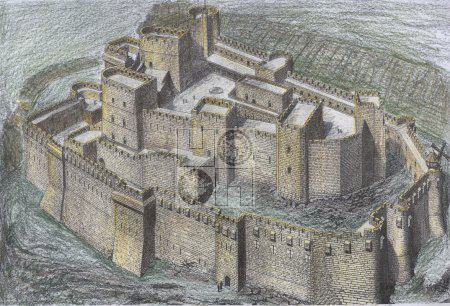Part 1

This
castle held by the Knights of St. John of Jerusalem, today a major
tourist attraction, lies in western Syria. It was the most powerful of
all Crusader castles. The exhibit shows the last phase of the siege laid
by Mamluk sultan Baybars in March 1271. The southwestern tower of the
outer castle has been undermined and is about to collapse allowing the
enemy to approach. While Muslim attackers and Crusader defenders are set
to engage in fighting, pilgrims and country people are seen fleeing into
the inner castle. The model manages to present the situation in an
interesting way avoiding however the depiction of any bloodshed.
Historically, at the end of one month’s siege, the castle was abandoned
by the Knights of St. John, the Muslims allowing them unhindered
departure under a promise of safe conduct.
The view of this exhibit is from the rear right into the inner castle opened up on this side, as well as into the 2,000- people capacity dormitory, the entrance hall, the knights’ great hall and the kitchen.
Measurements: base 6m x 6m ( 18ft x 18ft ), c 2.30m ( 7.5ft ) tall; on a
scale of 1/25.
2,000 handcrafted figurines of Christian and Muslim participants.
Pictures of the model of the
Crac des Chevaliers - Syria

Exhibition at the Archaeological Museum in Frankfurt on the Main (Germany)

Exhibition at the Museum of the National Geographic Society
in Washington D.C.

Engrafing of the Rey on the
South Eastern side of the Crac created by interns

Similar perspective of the
modell, but in the condition of the 13th century

South Eastern side of the Crac

Western side of the Crac

South Western side of the Crac

South Western side of the Crac

A scene of occupation with
underminings

Attackers in waiting position

Sultan Baibars is issuing his orders surrounded by his life guards

and he commands to sound the storm

Invaders ready to attack under Sultan Baibars

Attacking invaders storming up the walls with their ladders
Fotos: Bernhard Siepen